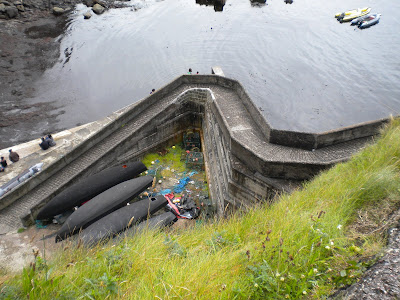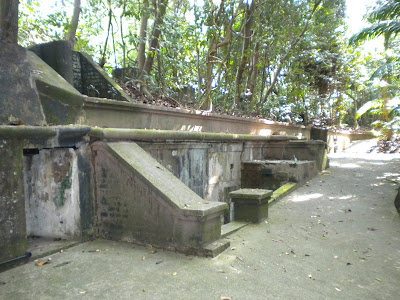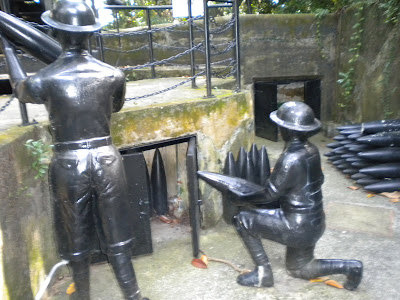It's tough to be a fly fisherman in Singapore. Not that it isn't done, here. It's just mostly illegal to do so. Or any type of fresh water fishing, except in designated areas. This March 2009 New York Times piece pretty much captures the fresh water fly fishing scene here.
There are a number of tackle shops in town, but only one shop caters to fly anglers, the Coho Fishing Tackle. It's clearly a business targeting a niche market, perhaps akin to the speak-easys in the U.S. during the days of prohibition. If the fly fishing is not so friendly in Singapore, it is not so far from some good fly fishing destinations, for those that can afford it-- the shop can equip the holiday fly angler. However each time I've visited, the place is busy, and they seem to be holding their own. It's often the same people that I see in the shop each time-- after all, it's a fly shop, where conversation, story telling, and angler socializing occur more than large volumes of commerce. Better than the corner bar. It is a great little shop-- the staff are wonderful, and very knowledgeable. I've spent a few Singapore dollars there myself, to fill in some "needed" fly tying materials that were absent or exhausted from my kit.
Another fly angling group in town are the Fly Fishing Singapore Forum. It is mostly a social website, but is frequented by fly fishing enthusiasts that are a splinter group from a larger general fishing organization in Singapore. Some of the group mebmers have been working with the Singapore government to expand areas in the republic for fly fishing, and champion the economic benefits that might be possible by creating a "blue ribbon" peacock bass fishery in Singapore. The group has also staffed a few events to educate the public on fly fishing, and promotion of catch and release fishing, a practice that is almost unknown here-- most fish that are caught get invited home for dinner.
As noted, the fresh water reservoirs are off limits to fishing, except in very small designated areas. Rangers patrol the reservoirs, and I'm told there is a fine when caught fishing in the restricted areas. The joke is that a reason for using a back cast in Singapore is to force you to look over your shoulder from time to time to spot rangers. Despite the restriction, I have talked to a few individuals in Singapore who brave the consequences of social disobedience to go after the peacock bass and snakeheads that ply the waters. Apparently it is common transgression, and possibly the restriction is only weakly enforced.
I have not yet gone after illicit Singapore peacock bass, but I have recently learned that a new, larger species of peacock bass has been brought in and stocked in Reservoir by the local fly fishing faithful. This may prove to be too much of a tempatation, and a Singapore experience that I should not miss while I am here.

















































